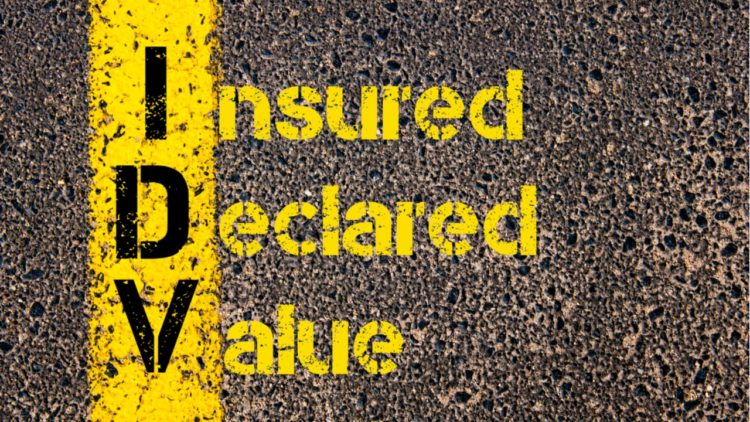Insurance plans undertake to compensate you for the financial loss that you suffer in case of eventualities and emergencies. The policy covers a specific type of risk and when you suffer from the covered risk, the loss suffered is covered under the plan. The risks covered by insurance policies should be uncertain in nature. When the risks are certain, the loss is certain which results in claims. Too many claims result in a loss for the insurance company. That is why the insurance company tries to find out the probability of claims in a policy before issuing it. This is where the underwriter comes into the picture.
Underwriting of an insurance policy means assessing the risk under the policy. When you approach the insurance company to buy an insurance policy, the company would, first, assess the risk that the company is undertaking to ensure. This assessment of risk is done by an insurance underwriter. An insurance underwriter, therefore, is the individual tasked with the duty to assess the risk of the insurance proposal before issuing the policy.
To assess the risk, the insurance underwriter peruses the details mentioned in the proposal form. After checking the details and verifying the documents that you submit, the insurance underwriter takes a decision to accept or reject the policy. The aim of the insurance underwriter is to judge how profitable the policy would be for the insurance company. Profitability depends on the probability of a claim. The lower the chances of claim in the insurance policy the higher would the policy be profitable.
Role of an insurance underwriter:
An insurance underwriter performs the following roles –
- Assesses the proposal of insurance to determine whether the policy would be issued or not
- Fixing the premium for the policy depending on the underlying risk
- Finding additional information, if required, before issuing the policy to determine the risk correctly
- Imposing coverage limitations in case the underlying risk is higher
- Ascertaining the best coverage terms and premium rates at which the policy can be issued so that the policy is profitable for the insurance company
Insurance underwriter vis-à-vis broker or advisor
An insurance underwriter is often confused with a broker/advisor. However, underwriters are different from brokers/ advisors in the following respects –
| Insurance underwriter | Insurance brokers/advisors |
| An underwriter is a person responsible for the insurance policy to be issued | An insurance broker/advisor is the person responsible for the sale of the insurance policy |
| The underwriter represents the insurance company and aims to increase the profitability of the company | The broker/advisor represents you, the policyholder, and aims to help you fulfil your insurance needs |
| The insurance underwriter fixes the premium to be charged | The advisor has no control over the premium of the policy |
| The underwriter can reject the issuance of the policy | The agent cannot control whether the policy is issued or not |
| Insurance underwriters are highly trained individuals with complete knowledge of insurance and its technical aspects | Insurance brokers/advisors are also trained but, compared to underwriters, they have limited knowledge and skills |
Insurance brokers/advisors are tasked with sourcing an insurance policy while insurance underwriters determine whether the sourced policy would be accepted by the insurance company or not. Thus, underwriters are different from insurance advisors or brokers and should not be confused with them.
Difference between insurance underwriter and surveyor
Another common misconception that many have is that insurance underwriters and surveyors are the same. They are not. Both insurance underwriters and surveyors are different from one another and they have different roles to play. Let’s understand the difference –
| Insurance underwriters | Insurance surveyors |
| The job of insurance underwriters is at the time of issuance of the policy | Insurance surveyors come into the picture when there is a claim |
| Underwriters determine the risk under a proposal for insurance. | Surveyors determine the cause of claim and the loss suffered |
| Insurance underwriters determine the coverage terms and the premium rate of an insurance policy | Insurance surveyors determine the amount of claim which would be paid by the insurance company |
Both insurance underwriters and surveyors are expert individuals trained in their respective fields however their jobs are different. Insurance underwriters are concerned with the issuance of policy while surveyors are concerned with policy claims.
Underwriting of an insurance policy can be done by an individual or a team of underwriters but the policy is issued only when underwriting is done. The need for underwriting arises both at the time the policy is bought as well as on renewals. On renewals, the insurance underwriter rechecks the risk under the policy and offers the renewal terms and conditions.
Any type of insurance policy that you buy, remember that the policy would be issued to you after it has been underwritten. Insurance underwriting is an important step of the purchase process and you should, therefore, understand what it means.
Frequently Asked Questions
- Can an underwriter increase the premium rate?
Yes, if the underwriter feels that the risk is high, he/she might increase the premium rate by charging an additional loading on the premium. - Does the underwriter determine the coverage level?
The coverage level under general insurance policies depends on the value of the asset. However, under life insurance plans, where human life cannot be valued, the maximum coverage level which would be allowed to you is judged by the insurance underwriter. The underwriter does financial underwriting to check your income and estimate the maximum life cover that you can avail. Based on the underwriter’s estimation the maximum coverage level for your life insurance policy is determined. - How long does it take for underwriting an insurance policy?
The time taken for underwriting depends on the type of policy that you buy and the risk factors. In case of insurance plans which have a lower coverage level, underwriting is done quickly and the policy is issued. However, in cases where the coverage level is very high, the insurance underwriter has to make sure that the risk is not very high because in case of claims the company would face a substantial financial loss. Thus, for high-risk cases or for cases when the coverage level is high, insurance underwriting takes time.



















